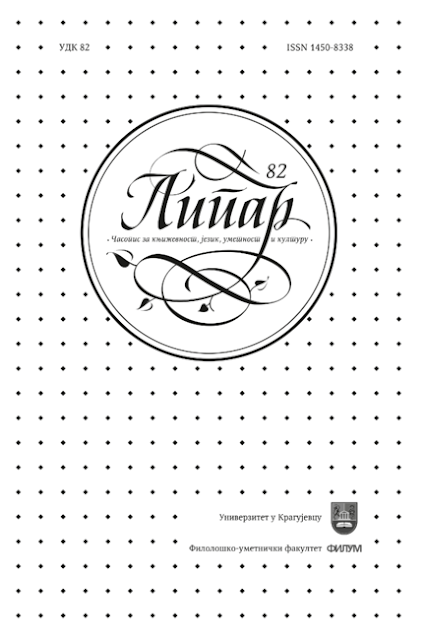КОНТРАСТИВНА АНАЛИЗА СОМАТСКИХ ФРАЗЕОЛОГИЗАМА СА КОМПОНЕНТОМ „ОКО” У ИТАЛИЈАНСКОМ, ШПАНСКОМ И СРПСКОМ ЈЕЗИКУ (СЕМАНТИЧКО ПОЉЕ ПАЖЊА/ОПРЕЗ)
CONTRASTIVE ANALYSIS OF SOMATIC IDIOMS CONTAIN- ING THE LEXEME "EYE" IN THE ITALIAN, SPANISH AND SERBIAN LANGUAGE (SEMANTICAL FIELD ATTENTION/CAUTION)
Author(s): Marija N. VujovićSubject(s): Language and Literature Studies, Theoretical Linguistics, Semantics, Comparative Linguistics, Phraseology
Published by: Универзитет у Крагујевцу
Keywords: eye;attention/caution; idiom; somatism; contrastive analysis; contrastive phraseology; equivalence; Italian; Spanish; Serbian
Summary/Abstract: This paper deals with the analysis of idioms containing the lexeme “eye” in the Italian, Spanish and Serbian languages. Since somatic idioms, especially those with the lexeme “eye”, represent a large part of the phraseological fund of three languages, only those idioms that express attention/caution were analyzed. Italian was the source language, whereas Spanish and Serbian are the target languages. The initial hypothesis was that two typologically related languages (Italian and Spanish) would share more common phraseological characteristics in comparison to typologi- cally unrelated language (Serbian).In order to prove the hypothesis from general and phraseological dictionaries, as well as from electronic sources, a research corpus was excerpted. Using the method of contrastive analysis, similarities and differences were identified from lexical, semantic and morphosyntactic aspects in order to establish the type of equivalence between the idioms at the interlingual level. The type of equivalence was determined for 22 idioms containing the lexeme “eye” in Italian, 19 in Spanish and 17 in Serbian. By contrasting the Italian and Spanish idioms, it can be concluded that there is absolute equivalence between 10 idioms, 5 of them form a relationship of partial equivalence with morphosyntactic differences, 2 a relationship of partial equivalence with lexical differences, 1 a relationship of partial equivalence with morphosyntactic and lexi- cal differences, zero equivalence is established between 3 idioms, and 1 false friend isidentified. On the other hand, the comparison of Italian and Serbian idioms gave the following results: 7 absolute equivalents, 4 partial equivalents with morphosyn- tactic differences, 5 partial equivalents with lexical differences, 1 partial equivalent with morphosyntactic and lexical differences, while zero equivalence was recorded in 5 cases, and there were no false friends. It can be seen that in both Spanish and Serbian, the highest percentage of idioms are absolute equivalents with their Italian correspondent, although that percentage is lower in Serbian than in Spanish.Therefore, it can be concluded that the initial hypothesis has been proven, ie. thattypologically related languages share more common phraseological characteristics. However, the number of partial equivalents between Italian and Serbian is very high. This can be explained by the fact that somatic idioms, due to the universality of bod- ily experience, reveal similarities between languages that do not belong to the same language family. The existence of universal human knowledge and associations about body parts explains the existence of somatisms that have the same or similar structure and meaning in different languages. On the other hand, although the human body has the same functions in all languages, their symbolism is culturally determined (Kovačević, 2012: 16-17), and that could explain the existence of zero equivalence and false friends at the interlingual level.
Journal: Липар - часопис за књижевност, језик, уметност и културу
- Issue Year: XXIV/2023
- Issue No: 82
- Page Range: 65-84
- Page Count: 20
- Language: Serbian

